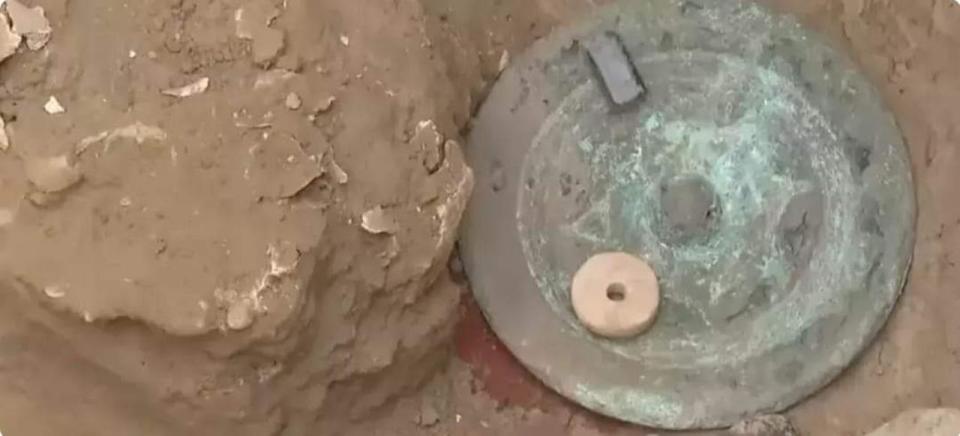Archaeologists have unearthed gold jewelry, arrowheads, and a large, bronze mirror from roughly 2,000-year-old burial mounds in the Turkistan region of southern Kazakhstan.
The artifacts are thought to have been made at the time of the Kangju state, a little-known entity that ruled the region between the fifth century B.C. and the fourth century A.D.
According to a translated statement by officials at Turkistan’s regional government, the finds show the highly developed craftsmanship of the region when the Kangju state traded with ancient Rome, ancient China, and the Kushan Empire farther south.
From its style — circular, with an eight-sided arched design on the back and a hole in the center for a thread — the bronze mirror seems to have originated in China during the Han dynasty, which ruled from 206 B.C. until A.D. 220.
Such items were highly prized throughout Eurasia — similar mirrors have been found in Afghanistan and the southern Ural region — and it was a sign the woman it was buried beside had been wealthy and influential, according to the statement.
Related: 1,500-year-old gold buckles depicting ruler ‘majestically sitting on a throne’ discovered in Kazakhstan
Ancient state
A team from Kazakhstan’s Ozbekali Zhanibekov University and local government archaeologists discovered the new finds in three burial mounds in Turkistan’s Ordabasinsky district. They reported that two of the mounds had been looted in ancient times but that the third burial mound contained valuable relics, the statement said.
In addition to the bronze mirror, the artifacts included a Roman-style brooch called a fibula; large and small beads; a pottery jug; a shoe; a belt buckle; an arrowhead designed for hunting birds; and two gold earrings that are thought to date from the first century B.C.

The earrings are especially ornate. They are fashioned with a colorful alloy known as “polychromatic” gold, inlaid with turquoise and rubies, in a crescent shape meant to represent the moon, with lower decorations that represent clusters of grapes and were designed to reflect sunlight.
RELATED STORIES
—Rare 2,100-year-old gold coin bears name of obscure ruler from pre-Roman Britain
—Ancient Roman necropolis holding more than 60 skeletons and luxury goods discovered in central Italy
—Bronze Age hexagonal ‘pyramid’ not like anything ‘found before in the Eurasian steppe’
Expedition leader Aleksandr Podushkin, an archaeologist at Ozbekali Zhanibekov University, said the Kangju state was a federation of different peoples, including, at times, nomadic groups of Sarmatians, Xiongnu, and Saki (who may have been Scythians).
The location of the Kangju cities on parts of the Great Silk Roads between China and the Mediterranean meant they had diplomatic and trade connections throughout the ancient world, he said in the statement.
The artifacts will now go on display in the National Museum of the Republic of Kazakhstan in the city of Astana, Podushkin said.
Source Agencies

